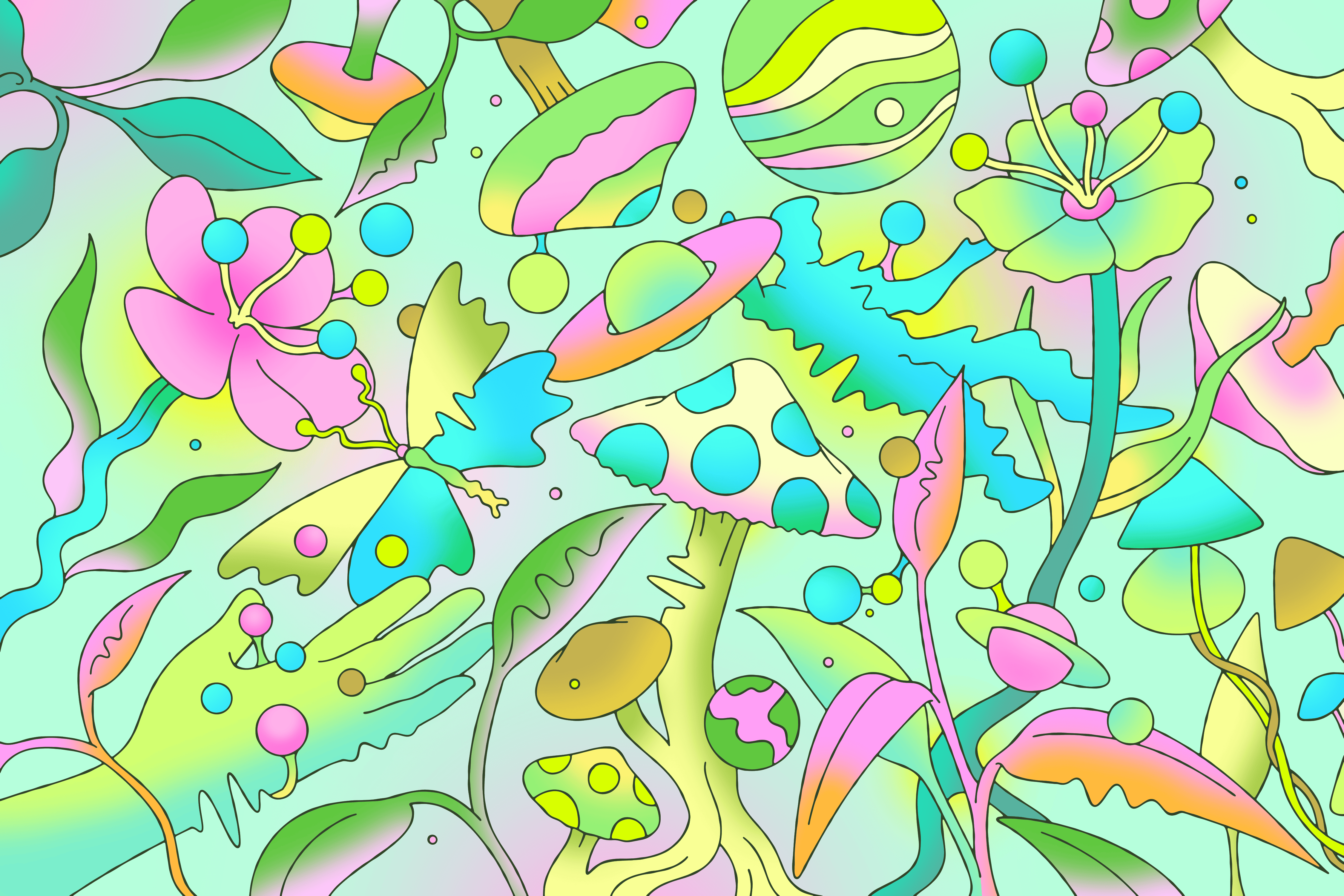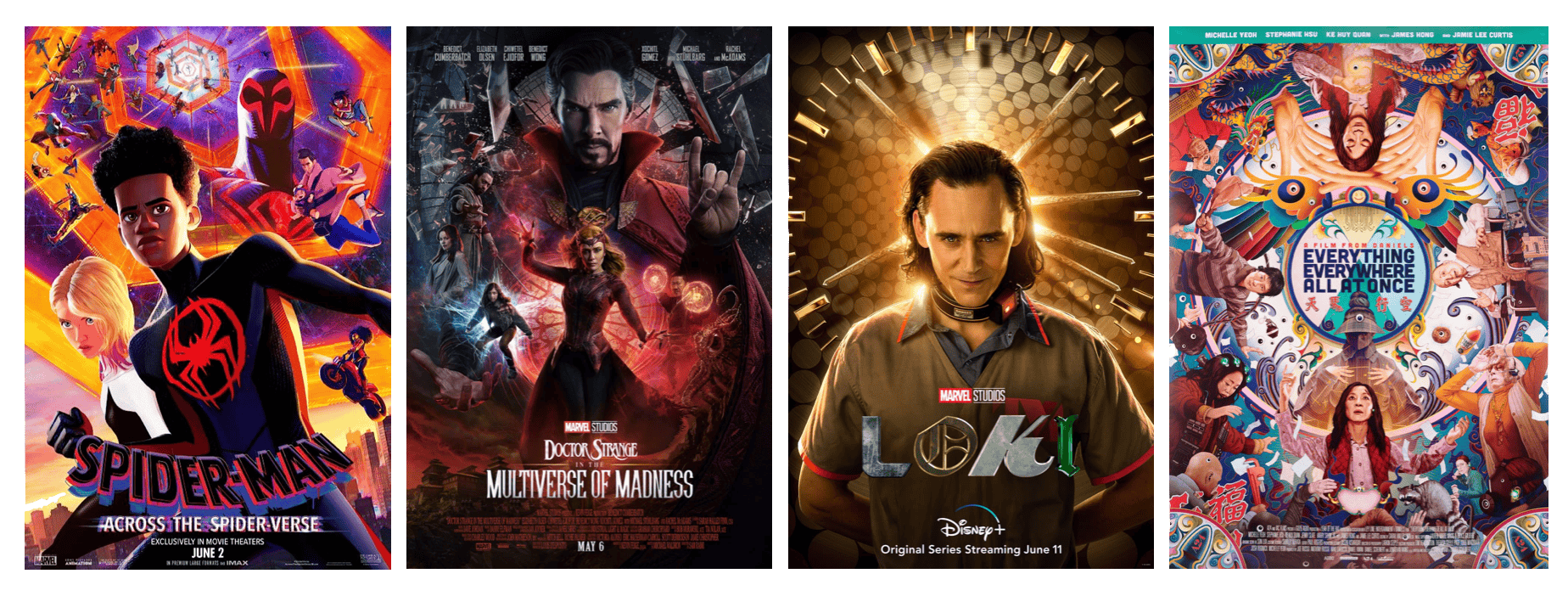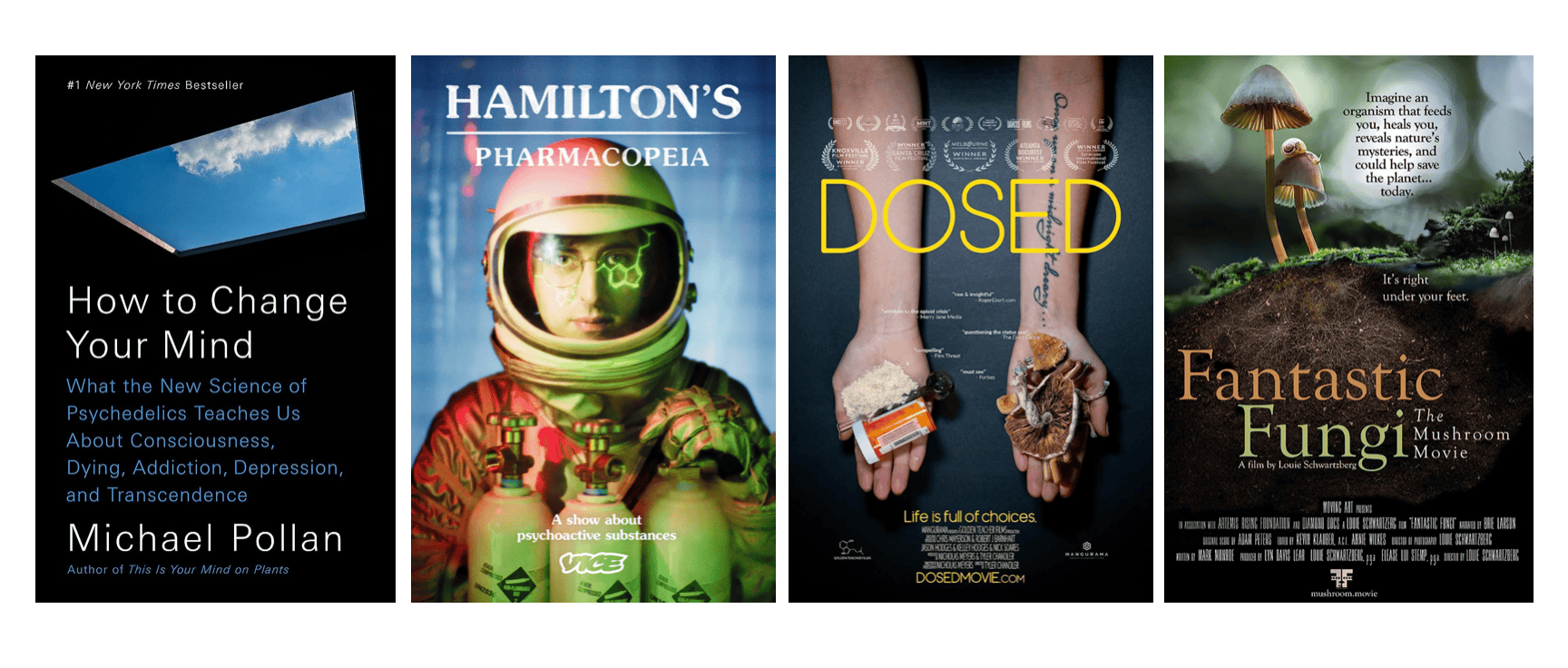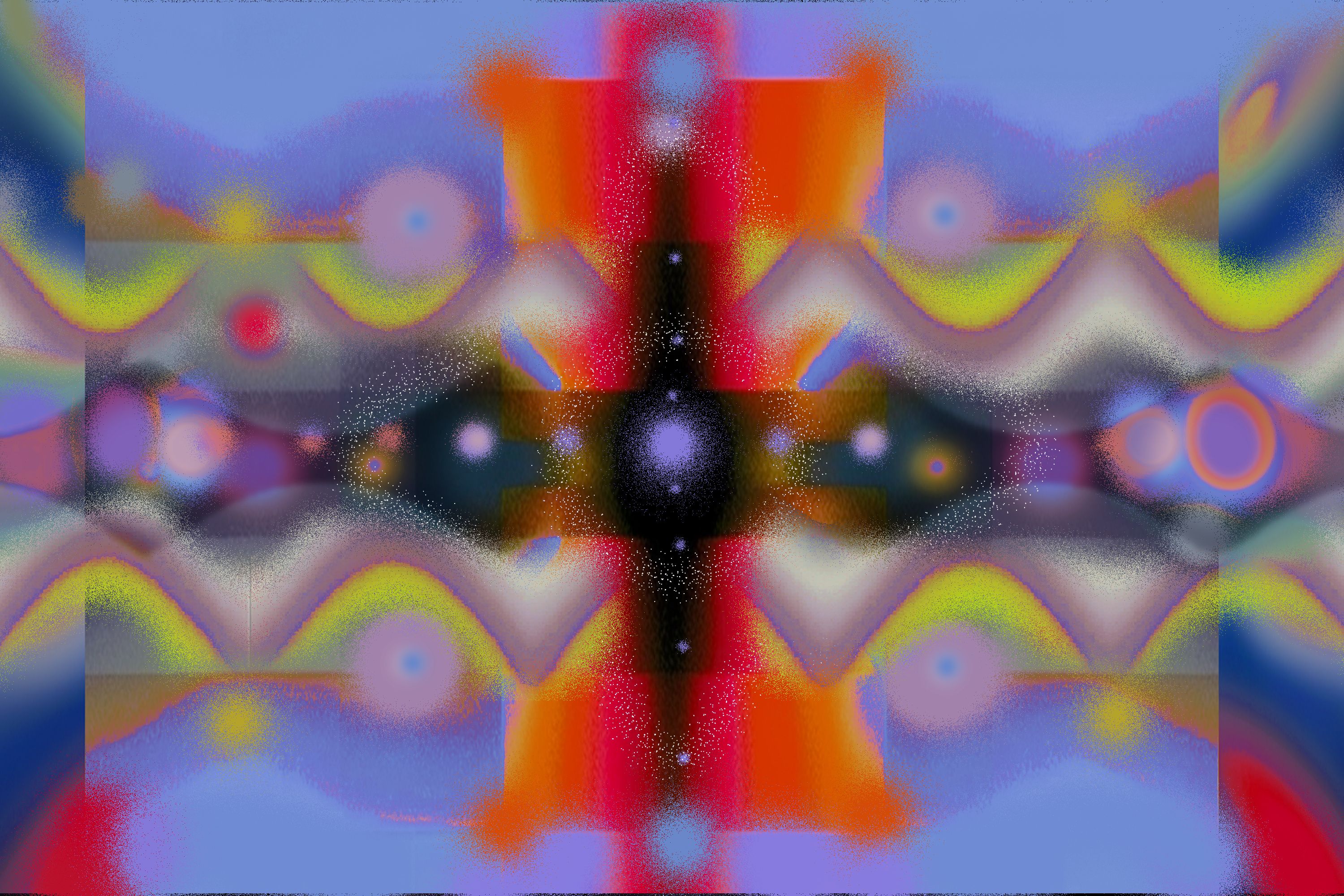Four Principles For Building Power in Media


2023-07-10
Every now and then an idea arises that is so potent, so powerfully explanatory, so ripe for the moment, that it permeates culture and comes to organize how people conceive themselves, each other, and the world we share. Nearly twenty years ago, we (Sem and Brian) wrote about what we called the info tech effect, and specifically how the network was overtaking linear narrative as the dominant metaphor and principle for organizing information, identity, and relationships. From social media to spatial computing, the info tech effect has shaped today’s world. In the last few years though, we’ve been seeing a new idea emerge, one which we think may represent an important evolution of and departure from the kind of network structures information technologies spawned. That new idea is the multiverse.
We see the multiverse in popular entertainment . . .

. . . where characters chase their fates across proliferating worlds, each with different rules, different internally consistent physics, and different iterations of themselves, their friends, and enemies. In the Marvel worlds, identity is fairly stable, cohering around a single set of essential attributes, interests, or appearances; a superhero stays a superhero from world to world, though their demographics change. Everything, Everywhere All At Once, on the other hand, presents a less continuous, more provocative notion of identity, where protagonists are human in one world and rocks in another, for example, begging the question of what exactly constitutes identity of being. Even a show like Severance drives its action with a kind of multiverse, with work and the rest of life split into discontinuous worlds by design and altered biology.
Underlying all this multiversal content is the idea that there is more to existence than the one material world our minds and senses tend to afford. There are infinite possibilities playing out across infinite worlds, each of which has some relationship or link to where we currently find ourselves in time and space. With special know-how, we can use these links to jump between worlds and access whatever they offer to enrich or undo any one world’s strictures. While the network shares the notion of multiplicity and links, the network exists inside a single world, “the same shared set of facts,” to use a well worn phrase which points to and encapsulates the network’s waning explanatory power. What’s different in the notion of the multiverse is that each point in the network is a world unto itself, each creates and depends on a different set of facts, different kinds of relationships and histories, so that between worlds there is radical discontinuity. We’ve moved beyond The Matrix, folks! The multiverse is a queer, chaotic, ever-expanding heap of systems, without a single rule set, feature set, or foolproof mechanisms of explanation or control.
The multiverse doesn’t just show up in movies as literal multiverses. The structure of many worlds—each singular onto itself and loosely interlinked in ways that are hidden, except to initiates, with their special knowledge, powers, or tools—this structure recurs across culture, like a motif that keeps repeating itself in a piece of music. It is due to this recurrence, this emerging pattern that we propose the multiverse as an important model underlying how we understand reality and interact with it. Where else do we see this recurrence?
We see it in books, for example, where more and more titles unfold the multiplicity of worlds in our midst in nature, upending the traditional supremacy of the human view, the dominance of human needs, and inviting us instead to imagine the consciousness of plants or other animal species, to enter imaginatively a different time scale, a different understanding of place, mind, meaning, relationship, and more. The single central human world under which we ordered nature has fragmented into many worlds.

Similarly, the dominances and supremacies that once organized identity and the politics that derive from it have fragmented and resolved into multiverses, too. Different identity groups may undertake the hard, ongoing work of mutual recognition, cooperation, or power building, but each remains essentially unknowable to the other. You have to belong to the group, to live inside of it to truly understand. For each group is a world unto itself, with discrete rules of engagement, specialized languages, and sometimes even spatial demarcations, so-called safe spaces. Moving between worlds in this multiverse is more challenging, and the ability and necessity of doing so is not evenly distributed, nor are the harms that can happen along the way.
Does the difficulty and pain of penetrating the barriers between worlds in a multiverse create a need for powerful actions and agents to help transport and heal us? We think so and see the multiverse at work in the resurgence of hallucinogens as centerpiece for an ever expanding class of therapies, ceremonies, and edible aides to the art of encounter. All the trip-focused media features reflect this.

Even in the ideas that underlie economics and politics today we can discern the multiverse. Take the cheerful, globalist neoliberalism and the relentlessly positive discourse of connection that powered Silicon Valley’s rise. In today’s more multiversal reality, it strikes a sour note. Or take the multipolar power structures of the international order. The U.S., China, Russia no longer seem like good or bad instances of nation-ness, so much as different ways of being and doing, with something somehow incomparable between them. Under the pressures of this emerging world order, even the internet fragments into national or regional infrastructure, neither trade nor migration flows as easily, and universalizing concepts like “human rights” resonate less.
Where do you see the structure of the multiverse in culture? And if the multiverse is the new organizing principle for understanding reality, as we argue in this provocation, what might that mean for you? We’re curious to hear what you think. Email us your ideas. In the meantime, here are a couple parting thoughts about what the multiverse suggests for media’s future:
Creative License. Remarking on the prevalence and popularity of the multiverse in movies, cultural critics Thomas Page and Aiden Siobhan observe how the multiverse provides big franchises especially a perpetual license to discontinuity: to recycle and resurrect characters, even the long dead or the replaced, to overwrite plot lines, and follow fan fantasy wherever it leads. This license is not without risk, however, which director Daniel Kwan notes in Thomas Page’s piece: how the infinite narrative possibility of the multiverse may be in tension with traditional audience identification, which has tended to depend on sustained attention to a stable set of characters in situations to generate sympathy.
Apple vs. Meta. The multiverse favors Apple’s Vision over Meta’s Metaverse, a virtual extension of the material world: open, social, predicated on presence. Apple’s vision of spatial computing, on the other hand, is an extension of their existing computing system: closed, personal, predicated on immersive-ness and experience intensity, “written” on top of whatever interior you find yourself in. Of course, the Vision can be used to share content, just as a computer or a phone can, and the Vision demo highlights the social experiences it can yield, via FaceTime, using an AI-generated rendering of your face. But there’s no attempt at presence in a single shared virtual space. It’s more like messages in a bottle sent between worlds. As Ben Thompson comments in his June 6 Stratechery article, “One wonders . . . if Meta is in fact fighting Apple not just on hardware, but on the overall trend of society . . . bullishness about the Vision Pro may in fact be a function of being bearish about our capability to meaningfully connect.”



